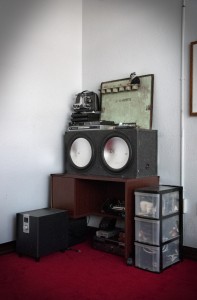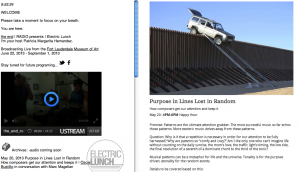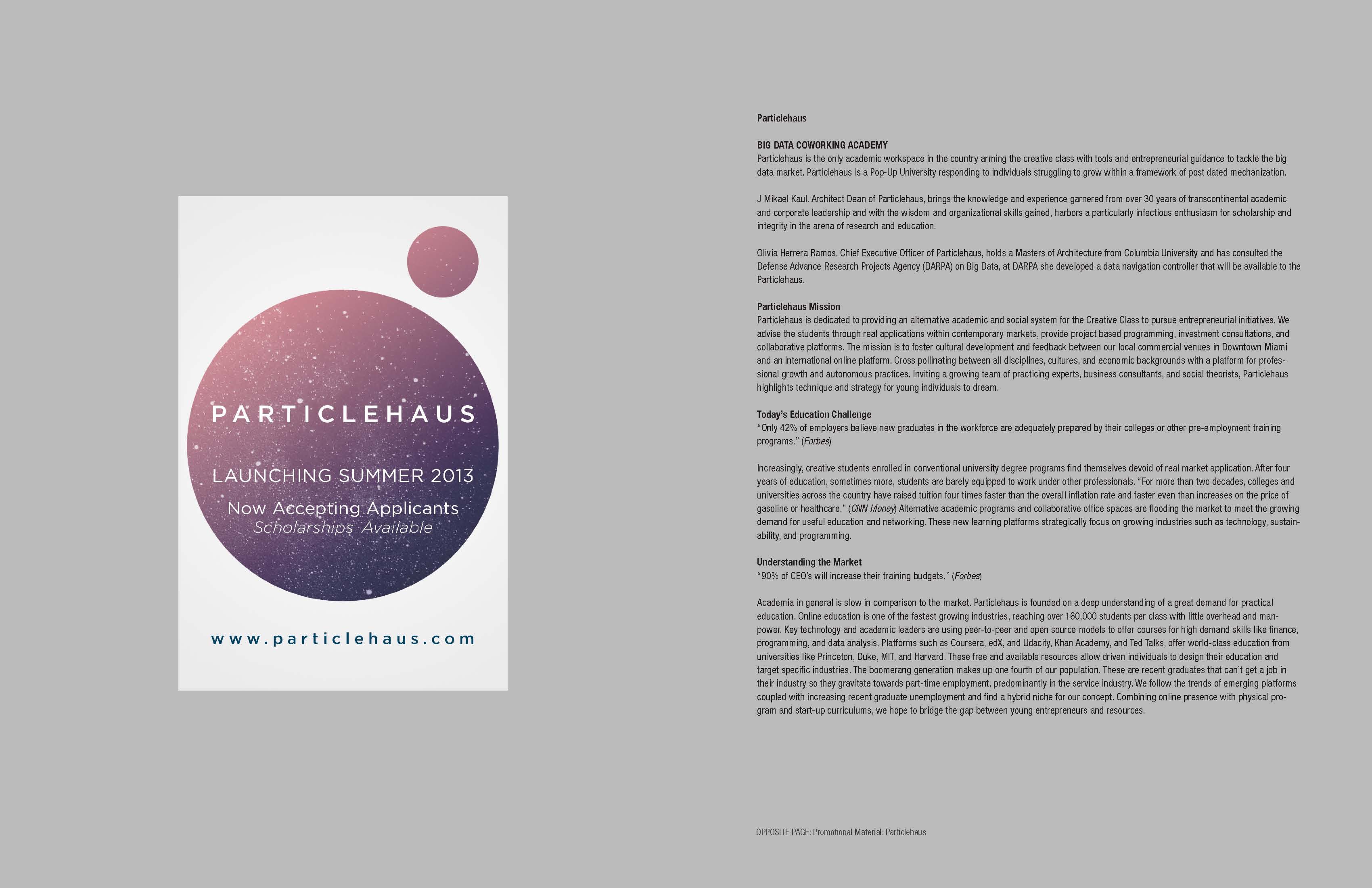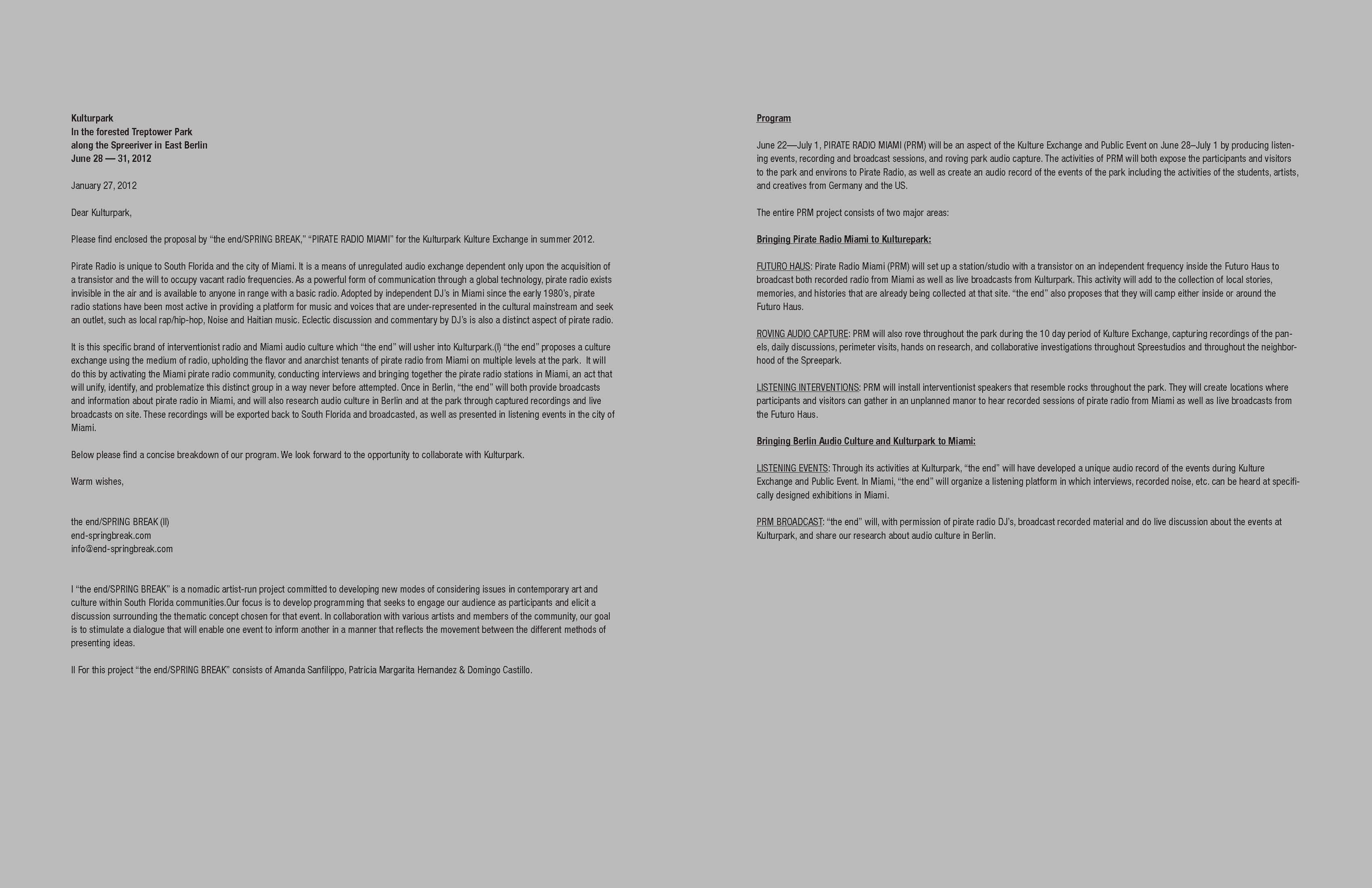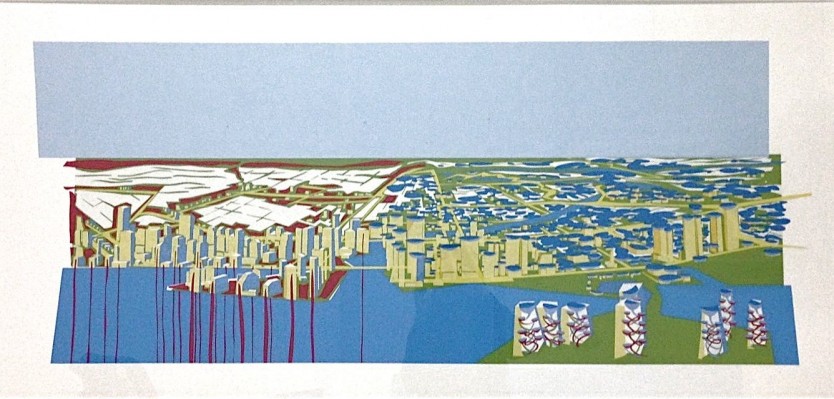
4.10.13 Conversation with Olivia Ramos and Patricia Margarita Hernandez by Amanda Sanfilippo
Amanda Sanfilippo: Where did the interest in forming an alternative university dealing with data come from? What is the lack?
Olivia Ramos: It comes from recognizing that now there is no career for what Patty does–but there should be. There is a need to find ways to form a connection between the information out there: media, data, etc., and bring it down to solve problems and have impact in communities. Bringing those high level ideas into the hands of people.
AS: And how did you become aware or interested in these problems?
OR: One thing was working with DARPA, the Defense Advance Research Projects Agency, which is the experimental hand of the department of defense. It opened my eyes to the big data problem when I did a residency with them several months ago.
Patricia Margarita Hernandez: It was a big deal, the first time they invited creatives to come in.
OR: The artists Nick Lobo, Dylan Romer, and I went up there together to Washington DC. In the end my project ended up being about feeling data with your hands and browsing data through touch. The university is going to use that as the first technology to kind of teach classes differently, and have students crawl the Internet differently.
AS: So what is your perspective on this data problem, why is there a problem or a need to experience data differently?
OR: In the last two years 90% of all the data in the world has been produced. With the technology we have today, its impossible to analyze the data in real time. It will be the same output each year, an exponential growth.
AS: What does that mean, impossible to experience it in real time?
OR: Because the data is so robust, it creates a funnel. It’s whatever the analyst can have on the screen. And there is so much that by the time you get to the bulk, its 3 years later and there is another bulk.
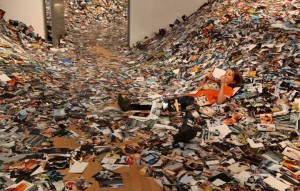
Erik Kessels, As part of the What’s Next, The Future of the Photography Museum at Foam, Amsterdam, 2011
AS: That reminds me of an installation by Erik Kessels; he printed out all of the images uploaded to Flickr in a 24-hour period to create an immense artwork filling several rooms.(I)
OR: Yes, the first project is going to be working with Twitter images that that are annotated. People post 5 to 10 pictures a day and annotate them.
AS: Annotate—meaning tag them?
OR: Yes, so for instance someone is looking for a black truck in this location at this time, and it might be in a picture somewhere. But it is really applicable in medicine. The data on cancer research available has yet to be looked at from a high level. Imagine looking at all of the data from every single hospital and being able to make connections. To zoom out enough. So right now data visualization people, their industry is growing, because if you can put it into an image it is more palpable. And that’s part of what we are going to teach is how to visualize all this information, and then automate it, and then expose the community to it.
AS: To automate?
OR: For example, you can use this if you are looking for a particular problem, such as an anomaly in a series of patterns. Every time a certain subject comes up, make a red dot. So now when you run this algorithm across a data repository, and you have seven dots, you see these seven things happen. So it is about designing the way we can read this information.
AS: Basically, when you run an algorithm, you are searching for particular kind of pattern?
OR: Yes, the simplest thing to describe it is: when this happens, make this note. If you detect this, make a note, if you don’t detect, make this note. It can get really complex. And for example one of the Deans for Particlehaus is an algorithm designer, has been designing them for 20 years. He will teach the theory of algorithms to the students.
AS: There are Deans in Particlehaus?
OR: There are two Deans. One with 30 years of experience in design theory, the other one is computer vision and design specialist. There is no totalitarian governing body. They need to check in and challenge each other to run the school.
AS: Patty, I know you have been interested in alternative education for quite some time now. How do you enter the picture here?
PMH: Through asking Olivia to come on my radio show [“Electric Lunch” on the end Radio].
AS: Is this a long term collaboration or one episode?
PMH: No, I think it is going to be long term. I’m interested in what she is doing—looking at my own work and interests there are connections. There are a couple things that stick out to me, one of which is the idea of the architect, and the different kinds of architects. Finding different ways to see things. So I found that interesting that they are opening a discussion [of new forms/structures], and referencing the Bauhaus. As the Bauhaus made their shift at that point in time, so [Particlehaus] is doing something for this particular point in time.
OR: Yes, the Bauhaus created a bunch of principles for Modernism: the ornament is crime, etc., and bared everything down. I feel like at the turn of this century, architecture is going into a virtual world, because that is where the real problems are today. Architecture is basically about problem solving, the movement of bodies, of information. It’s also a criticism on the current modes of education. The linearity of education. And we want to do a documentary, a bit of a history about how education came to be and its relationship to media is huge. Schools came to be when the newspaper came to be. So then I thought Patty would be great to lead that documentary. In both designing how we do the narrative and then being the main person on the documentary.
AS: The criticism of education is about its linearity?
OR: Yes, the linearity, that has not adjusted to all of the technology that all the kids are used to today. We are used to learning quickly at home, with TV, devices, internet, and then we get to school and we have to read this dense text which no one does, and the professor is teaching you, following the book, “This happened and then this happened.” When students go home and there is so much information at once, even in a video game. The climate, speed of car, someone’s shooting at you. They are used to using all their senses, so much stimuli. And they get to school, and its 1 + 1. So 40% of kids are on ADD medicine. We want to test different ways to intake information. Kids could be learning way faster which means they could be developing way faster. Problem-solving faster. And now we are keeping them, till 18, and don’t let them think for themselves. Then go to college and it is still regimented.
AS: Linear, like a line, as opposed to a net. A network.
OR: The Internet is a network. Before it was a newspaper, sort of linear. Now it is all over the place.
AS: So is the documentary a big project of Particlehaus, or is it a collaboration with “Electric Lunch”?
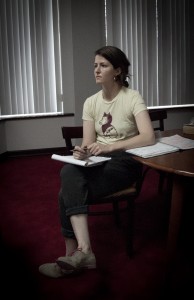
Patricia Margarita Hernandez: Electric Lunch, downtown Miami, 2013, images courtesy of the artist.
OR: It’s something that we might have to do to be able to fund the project. But it is good to have it – a way to explain where we are coming from and where we want to go. Another thing we are talking about a lot in terms of education is looking towards the future instead of looking to history, so kind of, how do you search the future, through historical data. Which is a different way of learning history (to apply it to the future).
AS: Learning history, from a future perspective?
OR: Learning the [needs of the] future, and in that process, bumping into history. The history becomes more relevant [when you need to use it, rather] than learning a line of history, and then having to go back later and apply it.
PMH: I think one of my main interests is archiving the whole thing, and seeing that there are many of these types of models, alternative education models that are relevant today. It is also nice to see it grow from this idea to what will be a university.
AS: What do you foresee the programming on “Electric Lunch” being in relation to this?
OR: Now that we have already done one radio program, for the series what would be interesting would be to sit down and think of a good outline, if there is a historical piece, maybe the history of education, and the history as it connects to media and find correlations. Then we piece-meal it on the radio, so at the end there is a big narrative, but then its also research we are interested in doing in the first place.
PMH: Segments, chapters probably. They are set to get their space in September [2013]. Once they have it, the plan is a two-story space. The first story will function as somewhat of an exhibition space, also a coffee shop will be there. From there I would come into the picture, dealing with the sound and archiving sound and being flexible to the needs of what is happening.
AS: So going there to one site and doing broadcasts.
PMH: Whether it’s a lecture I find interesting, an event, a class etc. I will be streaming it all at electriclunch.com. At the moment, I’m only committed to two days a week with “Electric Lunch” but it’s functioning about 3-4 days a week. It pops up in different places and I invite people to listen or participate, and I archive the sounds. It depends on what the event needs. It’s site-specific radio. So it depends where I am located. Now I may do a series broadcasting out of my kitchen. I’ve been thinking about where to continue taking it [after the DWNTWN Art Window project thought the Miami DDA is completed]. I am interested in conversations, negotiations, creating platforms. It’s fun to play around with at different locations. [What I am doing is] archiving sound, archiving what I consider relevant here in Miami now.
AS: How did you begin broadcasting on the radio as part of your practice?
PMH: It was born by accident. Actually, Amanda [Sanfilippo] came up to us [“the end/SPRING BREAK”] last year, and was like, “hey, lets do something with Anthony Spinello and Agustina Woodgate, this huge project called Kulturpark in Berlin [for the summer of 2012].” Originally we wanted to do a pirate radio station. They didn’t want to take the risk in Berlin to do a pirate radio, and said, why don’t you do online radio. So I went to Berlin, did the radio [in collaboration with Agustina and her radio project called “Radio Espacio Estacion (REE)”] and then continued to do projects more on my own back here in Miami.
Also, you can do whatever you want on Internet radio. It’s not regulated by the FCC. And that’s what I like, that freedom. I can be as controversial as I want or not. And there is a performative aspect, so the music that gets played on the radio is usually performed live and streamed, and I invite people not only to come and listen, but more so to come and watch [the broadcasts].
AS: Going back to the “Electric Lunch” series with Particlehaus, how does what you just described in terms of site-specific radio relate? It seems to me, the series, the process of creating content and archiving, is also formative. So it’s almost like this radio will help to develop and focus the Particlehaus ideas and use of space/programming. Which is really what a platform does in many ways.
OR: Yes and it could really be ongoing. Fine. So yes, maybe in a year Particlehaus is developed and we can use the series as an archive, of all the findings, and thinking about what that news looks like. Maybe the radio has a studio where you design news with the studio, as the curator of that studio. And as media is one of the biggest industries, this kind of education is tapping into that.
AS: In terms of alternative education structures, why do you see this collaboration necessary to happen? Particlehaus and “Electric Lunch”?
PMH: Particlehaus is filing a need for some sort of institution. Not even going into data yet, just the need for alternatives. We have Florida International University, University of Miami, St. Thomas University, and Barre University. They are falling short of a kind of intellectual development. They have different strengths. The University of Miami Medical School is awesome and progressive. The other schools have their high points, such as psychology, etc. But for intellectual growth, we need more. At least there is none that interest me. In the major cities, there’s how many alternative education schools/organizations? We don’t really have that here yet. The University of Wynwood did start doing alternative education, classes and events but it really has more to do with poetry than an art practice.(II)
I “What’s Next,” The Future of the Photography Museum at Foam, Amsterdam, 2011
II University of Wynwood is a fictitious university founded in 2008 by P. Scott Cunningham in Miami’s Little Havana neighborhood. The University’s Company Overview on their Facebook page states: “We are, first and foremost, a fake university. We have no students, no faculty, and no campus.” The organization’s main projects include O, Miami, Jai-Alai Magazine, and the UWyn Visiting Poet Series.
Tags: Journal
